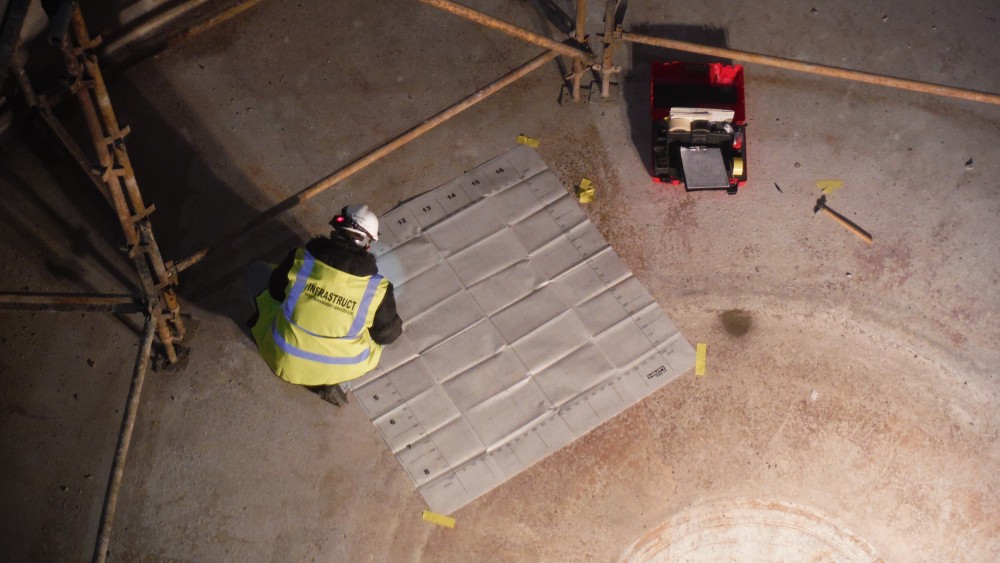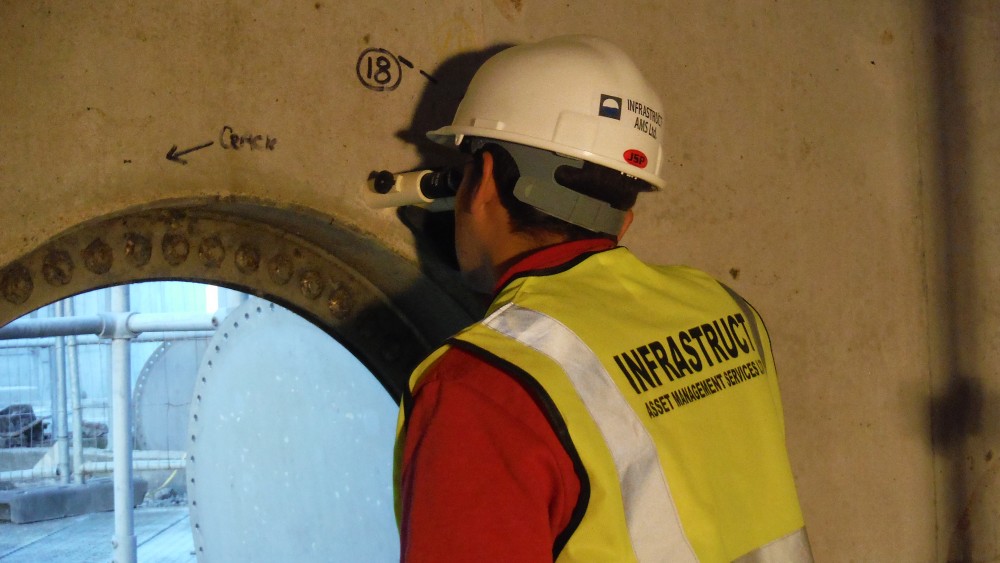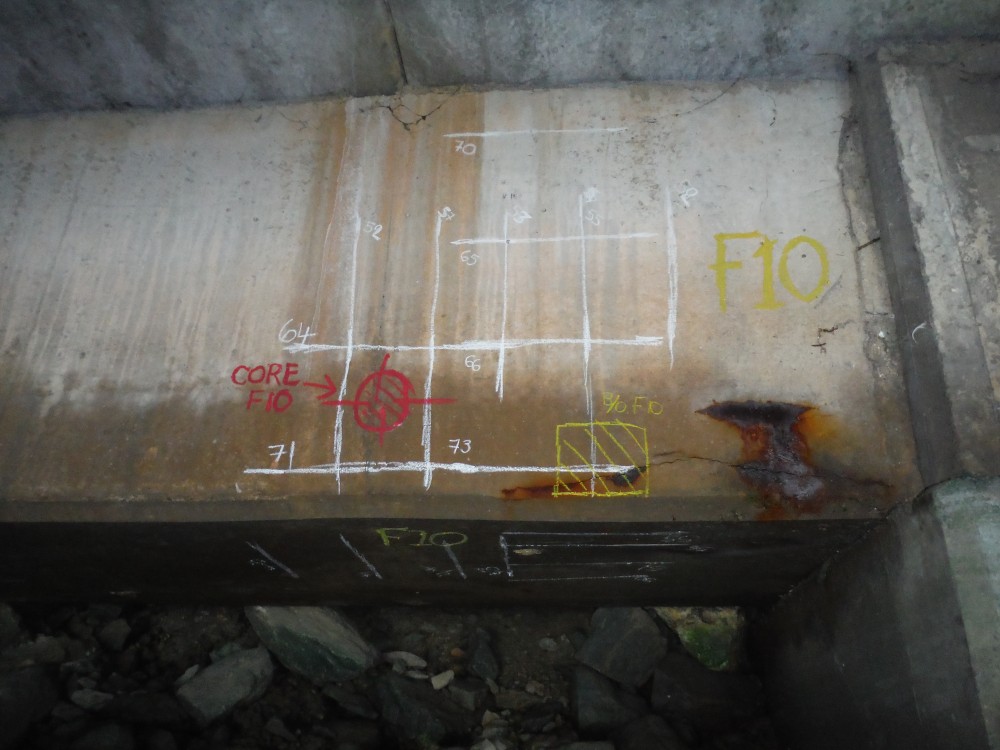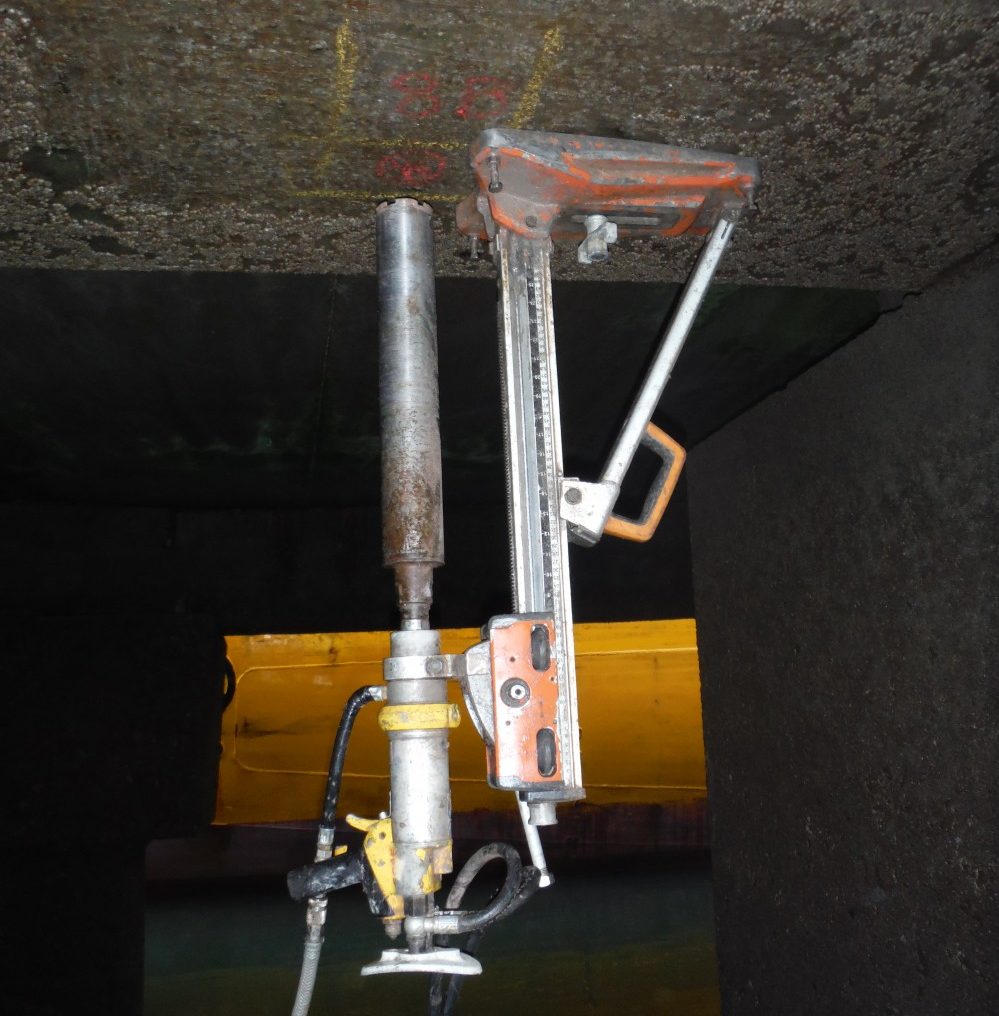In late 2014, Infrastruct AMS Limited carried out Special Inspections on 3 no. reinforced concrete tanks in a large wastewater treatment facility in Co Dublin. The tanks were out of service for several months and a brief inspection revealed chemical deterioration present on the internal surfaces. Confined spaces trained teams from Infrastruct AMS Limited completed the following works:
1. Hi-pressure water jetting of all structural elements to enable a detailed visual inspection of the internal surfaces;
2. Ground Penetrating Radar (GPR) survey to examine the integrity of the concrete and confirm the location and layout of the embedded reinforcement;
3. Corrosion assessment to confirm corrosion activity and determine the rate of corrosion in the concrete;
4. Crack mapping and measurement, including the depth of cracking on the internal surfaces;
5. Concrete sampling and laboratory testing to determine the properties of the concrete and conclusively establish the source of deterioration in the concrete. All Special Inspection work was under the supervision of our in-house Chartered Engineer.
A detailed technical report was prepared for the Client with recommendations on the most appropriate repair strategy for the three structures.







